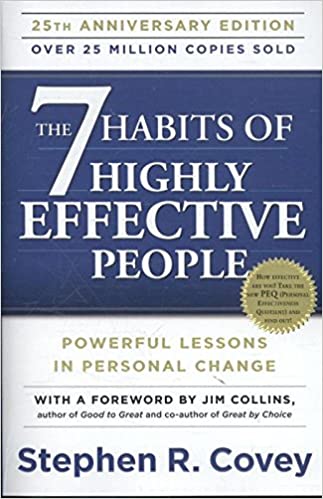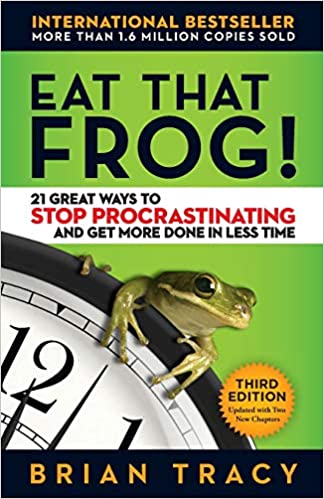
What do you spend your time on?
You might have a specific answer and the time journal to back it up. You might have a vague idea, a general awareness of where your time goes. You might also have no idea. (Thinking about time gives you a headache.)
Time management tools can help you answer this question with greater accuracy and confidence.
The Assist is a free, enjoyable weekly email offering actionable professional development tips and ways to enhance your time management skills. It's like that reliable friend you turn to for work and life advice, sending advice 4x a week to problem-solving go-getters like yourself.
❤️ Why we love this resource:
- Get unique productivity tips 4x a week.
- Learn how to manage your time at work with expert guidance.
- Enhance personal and professional growth through actionable advice.
Time management tools are the resources that help you identify what you spend time on and then maximize your Return On Time Investment (ROTI). (Yes, we just made up a new acronym!)
Return On Time Investment (ROTI) doesn’t always mean doing more in less time; depending on your goals, it might be doing more high-value tasks with the time you have.
Examining one’s time takes courage. It can be easy to turn a blind eye on productivity-draining habits because we love them. Plus, even if you think you already know where your time goes, time management tools might reveal hidden drainers or potential efficiencies.
The time management strategies, techniques, tips, and tools we’ve gathered below will help you achieve your ideal balance of productivity and pleasure.
⭐ Pro-Tip: Use “Command + D” to bookmark this list – we update it often with new content.
Do you want time to be your master or do you want to master time?
You know what you need to do. (Keep reading.)
Page Contents (Click To Jump)
Time Management Strategies For Work

Time management strategies for work are habits, mindset shifts, and mantras you can incorporate into your time management philosophy. Shift away from tasks and thought patterns that don’t serve your ultimate goals.
The time management strategies we’ve listed below will help you make big-picture time management decisions. They’ll guide you as you decide what to (and what not to) spend your time on. They’ll also help you determine how to efficiently plan your days.
1. Cultivate Unapologetic Focus By Prioritizing
✅ What it looks like in practice:
You like to focus on one thing at a time, seeing tasks through to completion before moving onto something else. You find multitasking chaotic. When you do it, you lose track of what you’re spending time on, what requires attention, and what tasks might even be delegated.
You regain control by prioritizing your list.
You rank every item on your to-do list. You complete #1 first, #2 second, and so on. It’s simple. It’s beautiful. It helps you get good work done.
When more work lands on your plate, you rearrange your queue using monday.com. No matter what, you always refuse to juggle. (You also never apologize.)
2. Vanquish Time Vampires With Designated Breaks
✅ What it looks like in practice:
Your phone is buzzing, but you ignore it. You don’t have time for that right now.
When you live according to this strategy, you designate breaks throughout the day to look at your phone, your social media accounts, your emails, your favorite websites, and all that other good stuff.
You recognize your more formidable foes and you work doubly hard to resist them. You might even use a time-tracking application like Toggl or Workpuls.
You tell your friends and family about your habits. They applaud (and sometimes) envy your willpower.
3. Stay Motivated By Focusing On What You Did
✅ What it looks like in practice:
When you see a few unchecked tasks on your to-do list, you don’t panic. You don’t focus on what you didn’t do; you celebrate what you did.
You end your day by logging what you did using Evernote, your comprehensive note-taking hub and haven.
You see that although you didn’t finish that report, you led a successful 25-person meeting.
You know shame and guilt weigh down your mind and waste your time. Acknowledging progress, however, boosts your confidence and motivates you to dive into your work.
⭐ Pro-Tip: If this strategy works for you, you might enjoy writing “morning pages.”
4. Go For The Flow By Strategically Ordering Tasks
✅ What it looks like in practice:
You believe the best, and most elusive, time management strategy is getting into a state of flow. When this happens, you lose track of time, but you somehow seem to pack days of tasks into a single afternoon.
You’ve learned to cultivate flow by ordering your tasks to match your flow of energy throughout the day. (You’ve pinpointed your energy flow by keeping a time diary.) You work best in the morning, so you eat your frogs (challenging and/or high-stakes tasks) first thing in the morning.
You find ways to reward yourself (with a delicious healthy snack) when you complete tasks you honestly don’t want to do. You isolate tasks you chronically avoid and find ways to delegate them.
5. Building Skills To Increase Your Efficiency
✅ What it looks like in practice:
You don’t beat yourself up for taking too much time to finish developing those training materials. (That task was outside your comfort zone and your usual skillset, after all.)
You recognize that you might be able to save time on some tasks by developing or boosting the underlying skills required to complete them efficiently and effectively. You read the articles and you take the classes you need to grow your skills to work smarter.
⭐ Pro-Tip from The Assist: Use the night before to get a head start on your morning routine by preparing your clothes, lunch and bags. This will save you time and reduce morning chaos.
Time Management Techniques For Work

Time management techniques are the specific, well-documented tactics you use every day to get stuff done.
The techniques below will help you deliver on the strategies for time-management you’ve adopted. If your strategies are like a GPS system, then these techniques are like your hands on the steering wheel, following expert directions.
6. Visualize Your Priorities
✅ What it looks like in practice:
You’re all about at-a-glance takeaways.
You adore all the following visual prioritization techniques:
- Ranked lists
- Dynamic boards on monday.com
- Color-code
- Prioritization matrices
- Story maps
- Gantt charts on monday.com
7. Time Yourself
✅ What it looks like in practice:
You know that nothing makes time more real than a timer. You own one of course, and you use it to do timed work and break sessions throughout the day. People tell you that sounds a little intense, but you tell them it actually helps you flow through work as though no time were passing at all.
Your session lengths follow the Pomodoro Technique®—you work for 25 minutes, break for 5 minutes, and then take a longer break every 4 sessions.
You love that using this technique doesn’t just help you get stuff done, but it actually helps you track what you spend your time doing. (It’s a time-management tactic and tracker in one.)
8. Plan For Success
✅ What it looks like in practice:
For you, creating a to-do list is more than just creating a to-do list. It’s an exercise in strategic vision and acrobatic efficiency.
You sit down at the same time each day to plan your next day, maybe even your next week, using a visual board on monday.com. You review your board before you go to sleep so you can spring into action at dawn.
You set deadlines and you meet them, because you know how to plan like you have a Six Sigma Black Belt.
You know exactly how much you can get done in a day. You mostly stick to the 1-3-5 method, adding in a few stretch goals every so often to keep yourself challenged and improving.
9. You Make Yourself Accountable
✅ What it looks like in practice:
You’re a motivated individual, but every once in a while, you find yourself procrastinating.
You keep yourself accountable with an accountability partner. Sometimes it’s your boss; you just tell her you’re going to send her something by 3PM, even if she doesn’t need to review it.
Sometimes you ask your co-worker to set a calendar reminder to ask you if you’ve done what you said you would.
When you know people are expecting things from you, you’re amazed by how much you can finish.
10. Implement Time Blocking Technique
✅ What it looks like in practice:
Time blocking is an effective time management technique that involves scheduling specific blocks of time to focus on certain tasks.
To implement time blocking, start by making a list of your priorities and tasks for the day. Then break these down into blocks of time on your calendar, dedicating 30 minutes to an hour for focused work on each key task. During that block, silence your phone, close email, and eliminate all distractions so you can devote your full concentration to the task at hand. Once the time is up, take a break before moving on to the next time block.
The key benefit of time blocking is it allows you to work on priorities without getting sidetracked and leads to greater productivity. Just be sure to schedule buffer time for interruptions and give yourself flexibility. Time blocking keeps you organized, minimizes distractions, and results in more meaningful work accomplished.
⭐ Pro-Tip from The Assist: Schedule your most challenging work tasks for when you have the most energy, typically first thing in the morning. This ensures you tackle top priorities when you’re able to focus best.
Time Management Tips For Work

Time management tips for work are the unexpected hacks, secrets, and shortcuts you find ridiculously effective.
The tips we’ve included below don’t require a complete overhaul of your habits or mindset. Start using any of these tips tomorrow, or actually, even today.
11. Use Pre-Created Efficiency Templates
✅ What it looks like in practice:
You know you don’t have time to make your own work templates and intense to-do lists, so you call for reinforcements—pre-designed tools and templates you can fill out and use within seconds.
- Bliss Collections Daily Planner
- Magnetic Dry Erase Weekly Calendar for Fridge
- Classic Size Project Planner
- Knock Knock All The Things Pad
- Knock Knock Plan of Attack Great Big Sticky Note
12. Trim The Fat From Your Day
✅ What it looks like in practice:
You’ve identified little things that take up disproportionate amounts of time, and you’ve figured out how to keep them under control.
Your time-saving solutions include:
- Writing shorter emails.
You no longer treat your emails as if they were novel manuscripts. Grammarly helps you save time by writing emails that contain zero extra words. You make your key points, answer relevant questions, highlight next steps, and send.
- You automate as much as possible.
You use monday.com’s automation features to make “busy work” do itself. You use Homebase to automate employee scheduling and save yourself hours.
- You wear the same thing every day to reduce decision fatigue.
You take a cue from Steve Jobs, Dr. Dre, and other successful people who wear the same thing every day.
You get up, get dressed, and save your brain power for things you find more important than selecting clothes.
- You eat the same thing every day to reduce decision fatigue.
You know what you like. You have a go-to list of healthy snacks and a handful of favorite recipes.
One time, you tried to pick a new lunch spot. It took you over an hour to decide, and afterwards, you just felt done for the day. After that, you decided to stick, more or less, to your go-tos.
13. Take A Break. (Just Do It!)
✅ What it looks like in practice:
You refuse to eat lunch at your desk. You find getting away from it all, even for just a few minutes, leaves you feeling recharged and clear-minded. You get more done than you would have by diligently working through lunch.
14. Follow A Consistent Quitting Time
✅ What it looks like in practice:
You work until 6 PM every day and not a minute afterward. Your coworkers know and respect this. In fact, knowing that you have only until 6 PM to get all your priority items done helps you focus.
This tip also helps you avoid becoming a victim of Parkinson’s Law, the principle that work will expand to fill the allotted time. If you give yourself until 11 PM to complete your work, your perfectionist streak kicks in to suck your time down the drain.
15. Think About Goals And Issues During Mentally Passive Tasks
✅ What it looks like in practice:
You know you have to work out and do chores, but you view these necessities not as barriers to time management but as opportunities for efficiency.
You keep a running log of ideas to brainstorm and issues to work through. You pick one to focus on while you do the laundry, run, go grocery shopping, stand in line, and more.
Because you’re not forcing ideas in these passive moments, you often generate powerful insights that fuel your on-the-clock work.
16. Maintain Internal Dialogue Throughout Your Day
✅ What it looks like in practice:
Unkind people might call this practice “talking to yourself.” You simply call it “internal dialogue.”
As tasks and work pile up, you keep yourself calm by asking yourself questions. Which of these items is the most important? Which of these items can wait? Why are these items important?
Mentally sorting your work helps you avoid productivity-draining internal chaos.
17. Clean Your “Work” House Regularly
✅ What it looks like in practice:
Once a week, you essentially KonMari your to-do list, eliminating tasks that are:
- Not important
- Not rewarding
- Possible to delegate
During this session, if you find something you can do in about 10 minutes or less, you knock it out right then and there.
⭐ Pro-Tip from The Assist: Build regular breaks into your schedule, like a 10-minute walk every 90 minutes. Short breaks will boost your energy and concentration, leading to higher productivity.
Time Management Tools And Apps For Work
Time management tools and apps for work are the software and applications that help you execute all your time management strategies, techniques, and tips.
The resources below will help you visualize, streamline, and improve your work and your return on time investment (ROTI).
18. monday.com
monday.com is a work OS you can use to do everything and anything you need to shine at work. Communicate, visually manage projects, and even automate certain tasks.
⏰ How it helps you manage time: Boards provide project status at a glance, so you never have to backtrack through notes and emails just to figure out what “stage” a project or task is in.
Buzz: Users especially love Monday.com’s automation features for time management.
One monday.com user said:
“We’ve automated so many of our mundane processes. Now we’re able to spend more time on the work that requires our talent.”
19. Toggl Plan
Toggl Plan is a simple, visual project planning tool that helps teams stay on top of work. With Toggl Plan, you can plan work, track task status, and manage your team’s workloads using color-coded timelines and boards. ⏰ How it helps you manage time: Toggl Plan’s visual overviews make it easy for everyone in your team to know what’s happening at work and what tasks they need to work on. It’s simple, intuitive interface means your team can get started quickly without spending time figuring things out.
⏰ How it helps you manage time: Toggl Plan’s visual overviews make it easy for everyone in your team to know what’s happening at work and what tasks they need to work on. It’s simple, intuitive interface means your team can get started quickly without spending time figuring things out.
Buzz: Users love Toggl Plan’s easy-to-use, color-coded visual interface.
“Seriously, you guys have saved me. I need to manage many time-sensitive tasks for myself and other artists. A deadline change? Boom, drag and drop, no morning headache!”
20. Homebase
Homebase provides a virtual hub where you can manage your team—communicating, scheduling, and even hiring and onboarding. It’s a virtual homebase for your team.
⏰ How it helps you manage time: Homebase offers built-in timesheets and time clocks that make the tracking aspect of time management as easy and efficient as can be.
Buzz: Users love how Homebase helps them save time on employee scheduling. What once required hours to do “by hand” now takes only a few minutes.
21. Grammarly
Grammarly helps you create emails and documents that are clear, concise, and correct. The tool provides recommendations on spelling, grammar, vocabulary, and more. It’s like having an editor/proofreader providing real-time comments as you write.

⏰ How it helps you manage time: You no longer have to spend time overthinking your constructions, wondering if you’ve said something in the best possible way. Grammarly will just tell you so you can get on with your day.
Buzz: 83% of Grammarly Business users believe the tool helps make their communications more professional.
22. Evernote
Evernote makes your notes actually work for you and not against you. It helps you take notes that are so organized, you can easily find the information you need and then get back to work.
Evernote even offers collaborative spaces that help you communicate your ideas and notes without sending a single email.
⏰ How it helps you manage time: Taking notes may be essential to completing informed work, but the process can drain time as you transcribe handwritten notes or search messy notebooks, looking for just one page. Evernote’s features help you eliminate that drain.
Buzz: Users love that Evernote saves them time by helping them stay organized.
“Time is money. We are extremely lean, we need to be efficient and work quickly. We pride ourselves on being organized, and Evernote allows us to live that philosophy.”
23. OmniFocus
OmniFocus makes it easier for you to put time management strategies and techniques to action. This app helps you get goals and to-dos out of your head and into an online interface where you can calmly organize, prioritize, and track everything.
⏰ How it helps you manage time: Tag your to-dos with keywords and deadlines so you can easily prioritize them and then get to work.
Buzz: David Allen, the author of one of the bestselling time management books listed below, says:
“OmniFocus is a stellar tool for keeping track of outcomes and actions.”
The Assist is a free, enjoyable weekly email offering actionable professional development tips and ways to enhance your time management skills. It's like that reliable friend you turn to for work and life advice, sending advice 4x a week to problem-solving go-getters like yourself.
❤️ Why we love this resource:
- Get unique productivity tips 4x a week.
- Learn how to manage your time at work with expert guidance.
- Enhance personal and professional growth through actionable advice.
Time Management Books For Work
Time management tools and techniques don’t follow a one-size-fits-all model. Reading deep dives from eminent experts in psychology, agile techniques, and other hot topics in time management might help you perfect your time management game.
24. The 7 Habits of Highly Effective People: Powerful Lessons in Personal Change
 📖 Why read it? To learn how to achieve positive personal change and paradigm shifts.
📖 Why read it? To learn how to achieve positive personal change and paradigm shifts.
25. Time Management in 20 Minutes a Day: Simple Strategies to Increase Productivity, Enhance Creativity, and Make Your Time Your
 📖 Why read it? To understand the nuts and bolts of fast and efficient time management while increasing your productivity on a day by day basis.
📖 Why read it? To understand the nuts and bolts of fast and efficient time management while increasing your productivity on a day by day basis.
26. Time Management: 2 Books in 1: Stop Procrastinating, To-Do List Formula – The Ultimate Guide To Brake Your Bad Habits And Increase Your Productivity
 📖 Why read it? To learn how to use your time more productively.
📖 Why read it? To learn how to use your time more productively.
27. 15 Secrets Successful People Know About Time Management: The Productivity Habits of 7 Billionaires, 13 Olympic Athletes, 29 Straight-A Students, and 239 Entrepreneurs
 📖 Why read it? To read and learn from real-world examples of super-productive people.
📖 Why read it? To read and learn from real-world examples of super-productive people.
28. Manage Your Day-to-Day: Build Your Routine, Find Your Focus, and Sharpen Your Creative Mind (99U)
 📖 Why read it? To examine why you’re not getting more done and refine your schedule.
📖 Why read it? To examine why you’re not getting more done and refine your schedule.
29. Eat That Frog!: 21 Great Ways to Stop Procrastinating and Get More Done in Less Time
 📖 Why read it? To discover long-term solutions that help you stop procrastinating not just for tomorrow, but also for life.
📖 Why read it? To discover long-term solutions that help you stop procrastinating not just for tomorrow, but also for life.
30. Atomic Habits: An Easy & Proven Way to Build Good Habits & Break Bad Ones
 📖 Why read it? To learn practical approaches to doing what you want to do.
📖 Why read it? To learn practical approaches to doing what you want to do.
31. Scrum: The Art of Doing Twice the Work in Half the Time
 📖 Why read it? To learn how to leverage agile techniques in your day-to-day life.
📖 Why read it? To learn how to leverage agile techniques in your day-to-day life.
32. The Big Leap: Conquer Your Hidden Fear and Take Life to the Next Level
 📖 Why read it? To find out what’s holding you back and overcome it.
📖 Why read it? To find out what’s holding you back and overcome it.
33. Getting Things Done: The Art of Stress-Free Productivity
 📖 Why read it? As the title suggests, to learn the best ways to get things done.
📖 Why read it? As the title suggests, to learn the best ways to get things done.
34. Essentialism: The Disciplined Pursuit of Less
 📖 Why read it? To find out how you can let go of overwhelming pressure and focus on the important things.
📖 Why read it? To find out how you can let go of overwhelming pressure and focus on the important things.
35. Smarter Faster Better: The Transformative Power of Real Productivity
 📖 Why read it? To understand the actual science behind productivity.
📖 Why read it? To understand the actual science behind productivity.
People Also These Questions About Time Management For Work
Q: What are the 5 key elements of time management?
- A: The 5 key elements of time management are:
1) Knowing what you need to do
2) Planning how, when, and where you will get it done
3) Prioritizing what to do first
4) Focusing on one thing at a time
5) Tracking what you’ve accomplished
Q: What is a successful time management strategy?
- A successful time management strategy is a habit, mindset, or mantra that helps you decide how to spend your time. A successful strategy, like the ones outlined here, stays top of mind as you’re planning tasks and helps you maximize your return on time investment (ROTI).
Q: What are 5 time management strategies?
- A: 5 time management strategies are:
1) Cultivating unapologetic focus by prioritizing
2) Vanquishing time vampires with designated breaks.
3) Staying motivated by focusing on what you did
4) Going for the flow by strategically ordering tasks
5) Building skills to increase your efficiency
Learn how to use these 5 time management strategies here.
Q: How can I practice better time management?
- A: You can practice better time management by identifying what you spend your time on. Track your time for about a month and then identify patterns of productivity and also those of wastefulness. Once you understand these patterns, you can start improving your habits.
Q: Are there time management books available?
- A: There are time management books available to help you learn how to adopt efficiency mindsets and leverage specific tactics and strategies. There are even books that could help you rethink your basic understanding of time. Find a comprehensive list of time management books here.
Q: Where can I find the best time management tools?
- A: Find the best time management tools in this post. This selection includes resources that can optimize how you get work done, how you create business communications, and even how you take and manage notes.
Q: How can I learn the most effective time management strategies?
- A: Learn about effective time management strategies here. Read about the strategies and test a few out until you find one or more to maximize your return on time investment (ROTI).
Q: How can I spend more time working and less time distracted?
- A: Spend more time working and less time distracted by identifying the things that chronically distract you and limiting your exposure to them. For example, if you find yourself checking your Twitter feed every 15 minutes, then you can designate specific Twitter breaks throughout the day to ensure you only browse during those times and spend the rest of the day focusing.
Q: What are the best time management techniques?
- A: The best time management techniques include:
1) Visualizing your priorities
2) Timing yourself
3) Planning for success
4) Holding yourself accountable
Learn how to use these time management techniques here.
Q: What are the best time management tips for managers?
- A: The best time management tips for managers include:
1) Following a consistent quitting time
2) Taking a break
3) Using pre-created efficiency templates
4) Cleaning your “work” house regularly
5) Thinking about goals and issues during mentally passive tasks
Find even more time management tips here.
Q: What is the most valuable commodity in the workplace?
- A: The most valuable commodity in the workplace is time. Adages, quotes, and lyrics reinforce this idea.
“Time is money.” (Anonymous)
“The two most powerful warriors are patience and time.” – Leo Tolstoy
“Time is a valuable thing. Watch it fly by as the pendulum swings. Watch it count down to the end of the day.” – Linkin Park, In the End
“Lost time is never found again.” – Benjamin Franklin













Time management is important to get success and helps to achieve anything in life and thanks to providing this wonderful information.
Great post on time management! The tips are practical and easy to implement. The Pomodoro Technique has been a game-changer for me. Thanks for sharing these valuable insights!